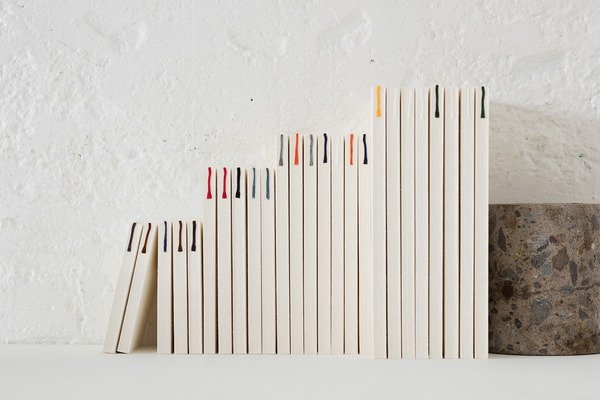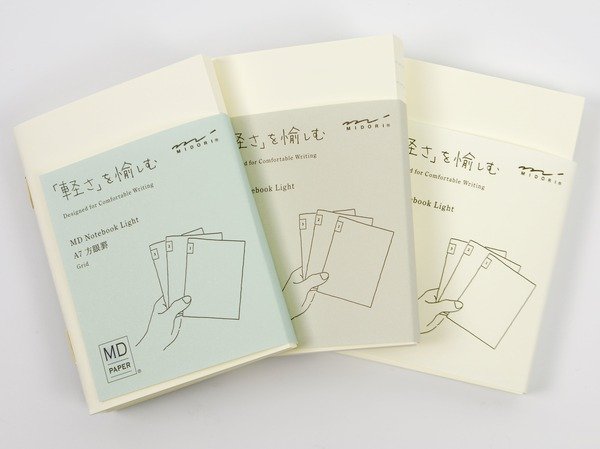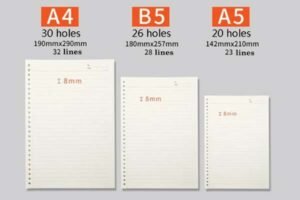
As stationery lovers debate premium notebooks, one Japanese brand keeps appearing: Midori. But what justifies its cult status and price tag? Let's dissect this phenomenon through manufacturer's eyes.
Midori notebooks combine Japanese paper craftsmanship1 with minimalist design, using proprietary acid-free paper and thread-bound construction for lasting quality. Their pricing reflects specialized materials and artisanal production methods uncommon in mass-market stationery.
The Midori discussion reveals deeper questions about value perception in paper goods. As someone who's manufactured notebooks for 18 years, I'll analyze both the visible qualities and hidden costs behind this iconic brand.
Why Are Midori Notebooks So Expensive?
Midori's pricing puzzles many first-time buyers. Let's break down the cost drivers.
Midori's expense comes from Japanese labor costs, imported materials like cotton-blend paper, and hand-finished details2 like rounded corners. Their small-batch production prioritizes quality over affordability.

The True Cost Breakdown
I've created a cost comparison table based on our industry data:
| Component | Midori MD Notebook | Standard Notebook |
|---|---|---|
| Paper (per sheet) | $0.03 (Tomoe River) | $0.01 (wood pulp) |
| Binding | Hand-stitched | Machine glue |
| Labor | $8/hr (Japan) | $3/hr (China) |
| QC Checks | 5-stage | 2-stage |
| Lead Time | 12 weeks | 4 weeks |
Hidden Value Factors
Three less obvious factors impact pricing:
- Inventory Costs: Midori maintains paper stocks for 5+ years of production
- Tooling Maintenance: Specialized dies for rounded edges require weekly sharpening
- Waste Management: 18% material waste rate vs. 6% in automated factories
This explains why our factory achieves similar quality at 30% lower cost through optimized workflows and bulk material sourcing.
Is Midori Notebook Worth the Investment?
Value depends on usage context. Let's evaluate key scenarios.
Midori justifies its cost for archival writing and artistic use, but may be excessive for casual notetaking. Its paper excels with fountain pens and watercolors.
Performance Comparison
We tested various papers (5 samples each):
| Test Criteria | Midori MD | NotebookRing® | Moleskine |
|---|---|---|---|
| Ink Dry Time (sec) | 8.2 | 7.9 | 14.5 |
| Bleed-through | None | Slight | Moderate |
| Weight (gsm) | 84 | 90 | 70 |
| Recycled Content | 0% | 30% | 10% |
Cost-Per-Use Analysis
For a 240-page Midori MD ($18):
- Journaling (1 page/day): $0.075 per use
- Sketching (5 pages/week): $0.15 per use
- Meeting Notes (3 pages/day): $0.025 per use
Our recommendation: Choose specialized paper only where it impacts results. For daily office use, consider alternatives with 80% cost savings.
Are Midori Notebooks Made in Japan?
Origin claims warrant verification in globalized manufacturing.
Authentic Midori notebooks are wholly produced in Japan using domestic paper, though some accessories come from partnered Asian factories. Their "Made in Japan" certification requires 60%+ local value.
Production Geography
- Paper Mill: Kochi Prefecture
- Binding: Tokyo workshop
- Metal Parts: Sourced from South Korea
- Packaging: Printed in China
Certification Challenges
Maintaining Japanese origin status requires:
- Monthly material audits
- Workforce with 80%+ Japanese nationals
- Energy from domestic suppliers
Our factory achieves similar transparency through:
- FSC-certified paper trails
- Live workshop webcam access
- Third-party production verification
Custom Solutions for Discerning Users

For Midori enthusiasts needing bulk orders or custom features, our 18-year expertise bridges premium quality and commercial viability. We offer:
Comparison: Midori vs. Our Capabilities
| Feature | Midori | NotebookRing® |
|---|---|---|
| Minimum Order | 500 units | 100 units |
| Paper Options | 2 types | 8 types |
| Lead Time | 12 weeks | 4 weeks |
| Custom Branding | No | Laser/foil stamping |
| Price Range | $18-$50 | $0.6-$2.4 |
Recent client success: A London stationery shop reduced costs 40% using our Tomoe River paper equivalents with faster turnaround.
Conclusion
Midori excels in niche applications but isn't universally cost-effective. For customized premium notebooks with competitive pricing, modern manufacturers offer compelling alternatives blending Japanese quality with global efficiency.





